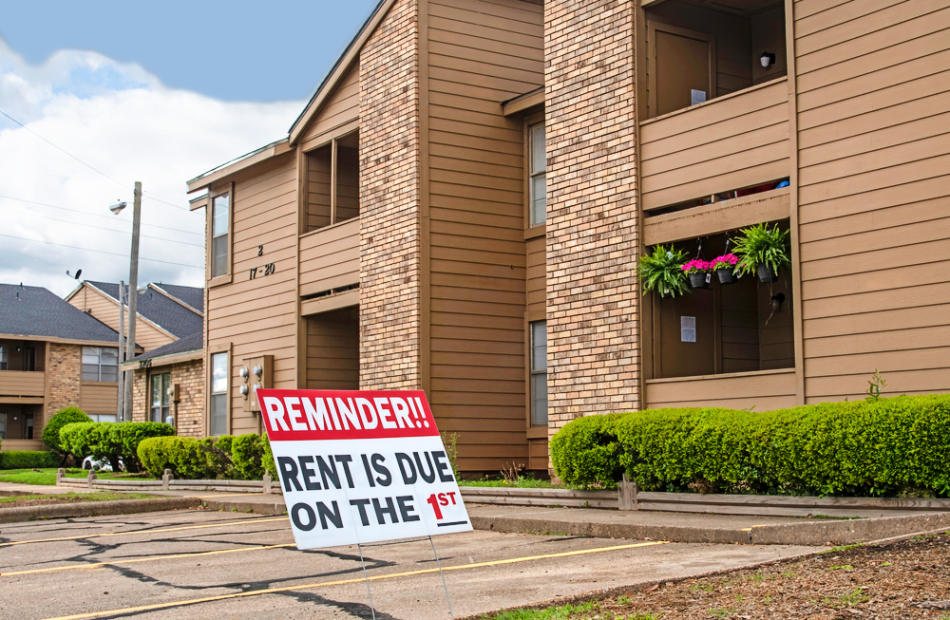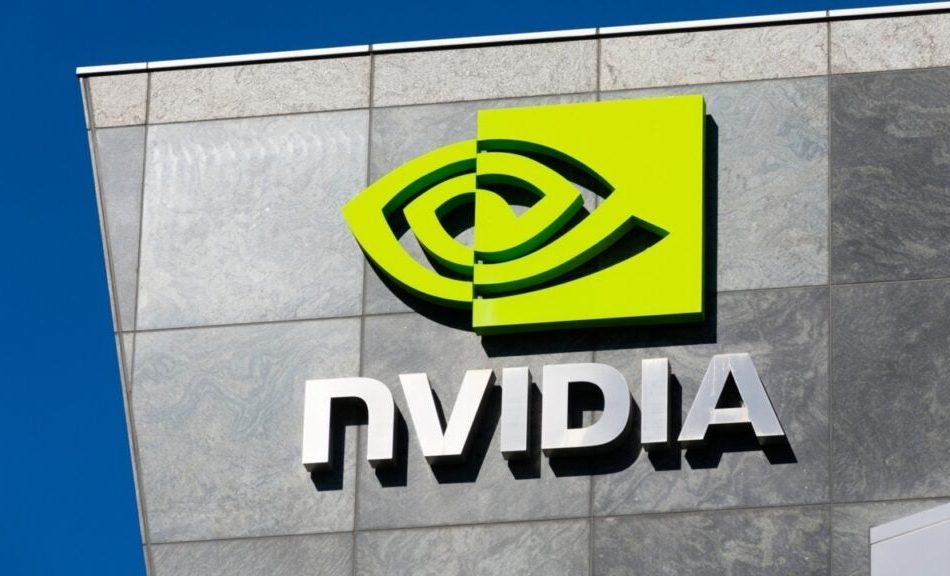Global benchmarks are mixed in cautious trading ahead of US holiday and jobs report
TOKYO (AP) — Global shares were mixed in cautious trading Monday ahead of the Labor Day holiday in the U.S., when stock exchanges are closed.
France’s CAC 40 slipped 0.3% in early trading to 7,611.64, while Germany’s DAX fell 0.1% to 18,881.14. Britain’s FTSE 100 was little changed, down less than 0.1% at 8,370.39. U.S. shares were set to drift lower with Dow futures down 0.1% at 41,613.00. S&P 500 futures fell 0.1% to 5,654.25.
Investors were also looking ahead to the U.S. employment report set for release Friday for an indication of the strength of the American economy.
In Asia, Japan’s Nikkei 225 gained 0.1% to finish at 38,700.87, after the Finance Ministry reported capital spending by Japanese companies in the April-June quarter increased 7.4% from the previous year.
After a period of stagnation, Japan’s economy is showing signs of a recovery. Next week, Japan will release revised gross domestic product, or GDP, data, a measure of the value of a nation’s goods and services. The preliminary data released earlier showed the first growth in two quarters.
Australia’s S&P/ASX 200 rose 0.2% to 8,109.90, while South Korea’s Kospi gained nearly 0.3% to 2,681.00. Hong Kong’s Hang Seng slipped 1.7% to 17,691.97. The Shanghai Composite dipped 1.1% to 2,811.04.
A bit of pessimism rolled in over China’s growth prospects over the weekend, as its National Bureau of Statistics reported that August manufacturing PMI, a barometer of industrial output, fell from 49.4 to 49.1. That was weaker than market forecasts.
Recent reports on the U.S. economy, including inflation, consumer spending and income, have been encouraging. The Commerce Department said its personal consumption and expenditures report showed prices rose 0.2% from June to July, up slightly from the previous month’s 0.1% increase.
That means price rises are slowing down, and that’s likely to lead to the Federal Reserve cutting interest rates for the first time in more than four years. The market expects the Fed will start cutting rates later this month.
In other encouraging news, Friday’s Commerce Department report showed Americans stepped up their spending by 0.5% from June to July and incomes rose 0.3%, faster in July than the previous month.
In energy trading, benchmark U.S. crude rose 5 cents to $73.60 a barrel. Brent crude, the international standard, added 6 cents to $76.99 a barrel.
In currency trading, the U.S. dollar edged up to 146.68 Japanese yen from 146.18 yen. The euro cost $1.1071, up from $1.1053.
___
Yuri Kageyama is on X: https://x.com/yurikageyama
Despite Being Down Between 22% and 64% From Their Peaks, These 3 Dividend Stocks Are Worth Buying in September
The S&P 500 and Dow Jones Industrial Average are less than 1% off their all-time highs, while the Nasdaq Composite is off by less than 5% from its peak. And yet, there are still plenty of stocks that are trading far below their peak prices, and many that have lost ground so far this year.
Among those stocks are oil and gas exploration and production company Devon Energy (NYSE: DVN), package delivery giant United Parcel Service (NYSE: UPS), and electrification technology company nVent Electric (NYSE: NVT). But these fool.com contributors think all three of these dividend stocks are worth buying now.
Devon Energy offers a high yield and takes a conservative approach to its payout
Scott Levine (Devon Energy): When a stock tumbles, investors naturally want to know if there’s something fundamentally wrong with the business that underpins the market’s skepticism. That’s certainly a question worth asking about Devon Energy, as its shares are currently trading about 19% below their 52-week high and down 64% from their all-time high. But even a cursory look at the exploration and production company shows that it’s performing well, and the stock’s decline is not predicated on something catastrophically wrong. Consequently, investors with longer investing horizons can sit back patiently while the stock recovers — collecting the passive income provided by a dividend that yields 4.5% at the current share price.
The sharp decline in Devon Energy’s stock belies the strong second-quarter financial results it recently shared. Surpassing its guidance, Devon Energy achieved daily oil production of 355,000 barrels, thanks to unexpectedly good results in the Delaware Basin. Moreover, thanks to the company’s strong performance in the first half of the year and its planned acquisition of Grayson Mill in the third quarter, management upwardly revised its 2024 production guidance to more than 680,000 barrels of oil equivalent per day — a 5% increase from the original forecast.
Devon divides its dividend payouts into fixed and variable distributions. In general, management aims for the fixed amount to equal about 10% of the company’s operating cash flow with the variable amount based on a variety of other factors. Broadly speaking, though, management aims to return about 70% of free cash flow to investors — a cautious approach that won’t jeopardize the company’s financial well-being.
For investors who are looking for dividend payments that come at a steady rate, Devon Energy isn’t the best choice since its payouts are based on its performance. However, those who are comfortable reaping the rewards when it’s strong — and weathering the temporary downturns during which it’s not — should consider picking up shares.
UPS has an enticing dividend
Daniel Foelber (UPS): Shares of the package delivery giant surged during the pandemic as vast numbers of consumers shifted much of their purchasing from in-store shopping to online ordering. But the stock is now down 45% from its all-time high and hovering around a four-year low.
UPS thought that the growth in demand for its services would last. It did not.
Earlier this year, UPS cut its once-optimistic forecast and charted a more realistic path forward based on a gradual rise in package delivery demand and a new three-year plan. Now, UPS must deliver on its promises. So far, it hasn’t done so.
The logistics giant’s just half a year into this new plan, and its results have already been disappointing. The good news is that UPS expects to return to earnings growth in the second half of the year. On its second-quarter earnings call, management also made a point of noting that its performance so far this year was heavily impacted by front-loading certain costs of the new labor contract it signed about a year ago with its largest union. But given the company’s consecutive earnings misses, investors are understandably not giving it the benefit of the doubt — hence the abysmal performance of the stock.
There’s no sugarcoating that UPS faces an identity crisis. It still hasn’t found a balance for what its new normal will look like, and investors have lost faith in management’s ability to forecast demand trends — which is a problem, given that poor forecasting can result in major excess labor and fuel costs or missed opportunities.
Despite the uncertainty, there is reason to believe that UPS stock has fallen far enough. The stock trades at a price-to-earnings ratio of just 20.9 — which is already reasonable. But that’s an especially attractive valuation considering that its earnings have been falling for over two years now, and its 12-month trailing earnings are now roughly the same as they were five years ago.
If UPS can return to growth in the coming years, we could look back at this time as an excellent buying opportunity. Some investors may want to wait for concrete signs that UPS is turning the corner. But those who are willing to take a stake in UPS now will benefit from a dividend that yields 5.1% at the current share price — which is a worthwhile incentive to hold the stock and endure this volatile period.
nVent’s electrifying future
Lee Samaha (nVent Electric): This electrical connection and protection solutions company’s stock is down 22.7% from its recent all-time high, and I think its sell-off has created a decent buying opportunity for an attractive long-term story.
nVent’s products (enclosures, electrical, and fastening solutions) are a pick-and-shovel way to play the “electrification of everything” megatrend. There are no data centers, renewable energy, industrial automation, 5G communications, or smart buildings/infrastructure without electrical infrastructure, and that means investments in the type of solutions sold by nVent.
As such, the stock represents a backdoor way to play an exciting thematic trend. Moreover, management is strengthening the company’s exposure to the theme through acquisition and divestitures. Over the last month, nVent completed the $695 million acquisition of custom-engineered control building solutions company Trachte. In addition, nVent announced the $1.7 billion divestiture of its mission-critical electrical thermal management solutions business.
As CEO Beth Wozniak noted on the company’s second-quarter earnings call, “The addition of Trachte further strengthens our solutions in high-growth verticals with approximately 85% of its sales in power utilities, data centers and renewables.”
nVent’s second quarter results were solid enough, and management continues to expect full-year organic sales growth of 3% to 5%, with adjusted earnings per share in the range of $3.23 to $3.29. Based on that, it trades at slightly more than 20 times estimated earnings.
While the dividend yield of 1.2% isn’t anything to write home about, its payout of $0.76 per share is well covered and gives management plenty of room for significant increases in the future.
Should you invest $1,000 in Devon Energy right now?
Before you buy stock in Devon Energy, consider this:
The Motley Fool Stock Advisor analyst team just identified what they believe are the 10 best stocks for investors to buy now… and Devon Energy wasn’t one of them. The 10 stocks that made the cut could produce monster returns in the coming years.
Consider when Nvidia made this list on April 15, 2005… if you invested $1,000 at the time of our recommendation, you’d have $731,449!*
Stock Advisor provides investors with an easy-to-follow blueprint for success, including guidance on building a portfolio, regular updates from analysts, and two new stock picks each month. The Stock Advisor service has more than quadrupled the return of S&P 500 since 2002*.
*Stock Advisor returns as of August 26, 2024
Daniel Foelber has no position in any of the stocks mentioned. Lee Samaha has no position in any of the stocks mentioned. Scott Levine has no position in any of the stocks mentioned. The Motley Fool recommends United Parcel Service. The Motley Fool has a disclosure policy.
Despite Being Down Between 22% and 64% From Their Peaks, These 3 Dividend Stocks Are Worth Buying in September was originally published by The Motley Fool
Ambarella, Bill Holdings And Box Are Among Top 7 Mid Cap Gainers Last Week (Aug 25-Aug 31): Are The Others In Your Portfolio?
These seven mid-cap stocks were the best performers in the last week. Are they in your portfolio?
- Semtech Corporation SMTC shares jumped 19.43% after the company reported better-than-expected second-quarter financial results. A couple of analysts raised the price target on the stock.
- Stevanato Group STVN stock gained 17.89% in the last week.
- Ambarella, Inc. AMBA stock escalated 17.29% after the company posted better-than-expected second-quarter results. Several analysts raised the price target.
- Ardent Health Partners, Inc. ARDT stock was up 15.16%.
- BILL Holdings, Inc. BILL shares increased 13.98% after the company’s CEO and CFO disclosed share purchases.
- Box, Inc. BOX shares increased 12.88% after the company reported better-than-expected second-quarter results and issued three-quarter and FY25 guidance above estimates. Some analysts raised the price target on the stock.
- Grupo Financiero Galicia S.A. GGAL shares are up 11.91% after JP Morgan upgraded the stock from Underweight to Overweight and announced a $54 price target.
Also Read:
Photo by Sundry Photography via Shutterstock
Market News and Data brought to you by Benzinga APIs
© 2024 Benzinga.com. Benzinga does not provide investment advice. All rights reserved.
1 Ridiculously Easy Way to Beat the Stock Market Experts
Individual investors love looking at the trading moves of legends in the industry, like Warren Buffett, Bill Ackman, Stanley Druckenmiller, or Cathie Wood. These professionals are in their positions for a reason. And maybe it’s best to follow what they do for your own portfolio.
While there are certainly some fund managers out there who deserve a ton of credit for putting up impressive track records, the truth is that the vast majority of them actually lose to the S&P 500. This is a troubling statistic.
But all hope isn’t lost for the individual investor. If you want to beat these so-called experts, here’s one ridiculously easy way of doing so.
Keep it simple
If most fund managers lose to the market over a long time horizon, then it makes sense that owning an exchange-traded fund that tracks the performance of the S&P 500, like the Vanguard S&P 500 ETF (NYSEMKT: VOO), is a no-brainer method of outperforming the experts. In the past decade, this ETF has produced a total return of 237%, turning a $10,000 initial cash outlay into almost $34,000 today.
That’s certainly a respectable gain that could’ve been achieved by doing absolutely nothing. It didn’t require someone to pore over financial statements or stock reports or to obtain a fancy MBA.
Besides being very low maintenance, perhaps even more notable is the fact that buying and holding the Vanguard S&P 500 ETF is cheap. The expense ratio of 0.03% means that for every $10,000 invested, only $3 goes toward the fee each year. Compare that to professional money managers who can charge substantially more than that for what’s usually poor performance.
Investing in the stock market is a unique playing field where the pros can severely underperform the average person out there, as well as the overall market. It could be due to overconfidence and trading too often, following the herd and owning what everyone else does, or simply over-diversifying and not focusing on the best ideas. There could be many reasons for the disappointing results.
At the end of the day, the simplest option is typically the best, particularly when dealing with your hard-earned savings and investments. In my opinion, that choice is the Vanguard S&P 500 ETF.
Behavior matters
Knowing what investment vehicle to put money into is only half the battle. Now that investors understand that they can do much better than the experts by simply buying and holding the Vanguard S&P 500 ETF, another critical factor to think about is behavior.
I don’t think anyone believes that professional fund managers aren’t smart. These are well-educated people who know how markets work and how to analyze companies and stocks. But even they, too, must deal with their own biases and emotions.
Here’s where the individual investor can try to gain an edge. There’s no need to try and time the market, even though it sounds like a smart idea to trade in and out of stocks to avoid the down days and capture the up days. The best course of action is to adopt a dollar-cost average strategy, regularly adding savings into the ETF on a monthly or quarterly basis. Staying focused over the longer term, such as 10 years or more, is key, while also recognizing that volatility is inevitable.
Next time you turn on the financial news and watch so-called experts sitting around a table discussing the market and their stock picks, you can rest assured knowing that your portfolio is likely to perform better than theirs over the long term. And all thanks go to the Vanguard S&P 500 ETF.
Should you invest $1,000 in Vanguard S&P 500 ETF right now?
Before you buy stock in Vanguard S&P 500 ETF, consider this:
The Motley Fool Stock Advisor analyst team just identified what they believe are the 10 best stocks for investors to buy now… and Vanguard S&P 500 ETF wasn’t one of them. The 10 stocks that made the cut could produce monster returns in the coming years.
Consider when Nvidia made this list on April 15, 2005… if you invested $1,000 at the time of our recommendation, you’d have $731,449!*
Stock Advisor provides investors with an easy-to-follow blueprint for success, including guidance on building a portfolio, regular updates from analysts, and two new stock picks each month. The Stock Advisor service has more than quadrupled the return of S&P 500 since 2002*.
*Stock Advisor returns as of August 26, 2024
Neil Patel and his clients have no position in any of the stocks mentioned. The Motley Fool has positions in and recommends Vanguard S&P 500 ETF. The Motley Fool has a disclosure policy.
1 Ridiculously Easy Way to Beat the Stock Market Experts was originally published by The Motley Fool
Billionaire Bill Gates Has 54% of His Trust Invested in 2 Brilliant Stocks
The Bill & Melinda Gates Foundation (BMGF) engages in various philanthropic activities around the world, everything from improving healthcare systems and promoting education to fighting poverty and inequalities. Since its inception, the organization had paid out more than $77 billion in grants.
The foundation’s charitable giving is funded by the BMGF Trust, which holds and invests donated money. As of June 2024, the trust had $48 billion spread across 23 positions, but 54% of the portfolio was allocated to two stocks: 33% in Microsoft (NASDAQ: MSFT) and 21% in the Berkshire Hathaway (NYSE: BRK.A) (NYSE: BRK.A).
Incidentally, the BMGF Trust beat the S&P 500 (SNPINDEX: ^GSPC) by 10 percentage points in the last three years. That outperformance was due in large part to its substantial positions in Microsoft and Berkshire Hathaway. Moreover, current asset allocation suggests Bill Gates (Co-Chair of the Board of Trustees) still has confidence in both stocks.
Here’s what investors should know.
Microsoft: 33% of the Bill & Melinda Gates Foundation Trust
Microsoft is the largest software company in the world. It has a particularly strong presence in the business productivity and enterprise resource planning verticals with its Office and Dynamics products, respectively. Microsoft has added generative artificial intelligence (AI) copilots to both ecosystems to create new monetization opportunities. Copilot customers increased more than 60% sequentially in the June quarter.
Additionally, Microsoft Azure is the second-largest public cloud. The company has a strong presence in several cloud verticals, including cybersecurity, database management systems, and hybrid computing. Additionally, research company Gartner recently named Microsoft a leader in data science and machine learning platforms, and Azure has secured early momentum in generative AI developer services due to its partnership with OpenAI.
Given those strengths, Morgan Stanley analysts think Azure could overtake Amazon Web Services (AWS) as the leading public cloud by 2027. Microsoft actually lost two percentage points of market share (sequentially) in the June quarter, while AWS and Alphabet‘s Google Cloud gained a percentage point a piece. But Microsoft CFO Amy Hood noted that demand for AI services exceeded capacity, so market share losses could be temporary while the company builds out its infrastructure.
Microsoft reported better-than-expected financial results in the fourth quarter of fiscal 2024 (ended June 30). Revenue increased 15% to $64.7 billion and GAAP net income rose 10% to $2.95 per diluted share. The top line grew faster than the bottom line because the recent Activision acquisition added about three points to revenue growth and subtracted about two points from operating income growth.
On a less optimistic note, Azure revenue missed estimates in the fourth quarter, and management provided worse-than-expected guidance for the first quarter of fiscal 2025. That caused the stock to tumble about 5% following the report, and shares have yet to fully recover.
Going forward, Wall Street expects Microsoft’s earnings to grow at 15% annually through 2027. That makes the current valuation of 35.3 times earnings look relatively expensive. Investors should be cautious right here. Personally, I would feel more comfortable buying Microsoft stock if it was 15% cheaper, somewhere around $360 per share.
Berkshire Hathaway: 21% of the Bill & Melinda Gates Foundation Trust
Berkshire Hathaway is a holding company that owns a diverse group of subsidiaries, the most important of which are its insurance businesses. Berkshire first entered the insurance industry when it purchased National Indemnity in 1967, pivoting away from its core textile business. The company has since become the world leader in insurance float, a term that refers to insurance premiums paid to Berkshire that have not yet been paid out in claims.
CEO Warren Buffett says the company has paid “less than nothing” to accumulate float due to its disciplined underwriting, meaning earned premiums have generally exceeded the cost of paying claims. In fact, Berkshire achieved a combined ratio of 87% in the second quarter, well below the industry average of 101.5%. Values under 100% correspond to profitable underwriting, so Berkshire’s underwriting is much better than average.
Warren Buffett and his fellow investment managers Todd Combs and Ted Weschler have invested that float to great effect over the years. Berkshire had $235 billion in U.S. Treasury bills and $285 billion in equity securities (stocks) on its balance sheet as of the second quarter. That sizable investment portfolio has helped drive book value per share growth of 10.4% annually over the last three years, outpacing the 8.3% annual gain in the S&P 500.
Berkshire Hathaway delivered a solid financial performance in the second quarter. Revenue increased 1.2% to $93.7 billion and operating earnings (which exclude gains and losses on stocks) increased 16% to $11.6 billion.
Going forward, Wall Street expects operating earnings to increase at 17% annually through 2027. That consensus estimate makes the current valuation of 24 times operating earnings look reasonable. Investors should consider buying a small position, especially if they are looking for an excellent defensive stock. Berkshire outperformed the S&P 500 during the last six recessions by a median of 4.4 percentage points, according to Bespoke Investment Group.
Should you invest $1,000 in Microsoft right now?
Before you buy stock in Microsoft, consider this:
The Motley Fool Stock Advisor analyst team just identified what they believe are the 10 best stocks for investors to buy now… and Microsoft wasn’t one of them. The 10 stocks that made the cut could produce monster returns in the coming years.
Consider when Nvidia made this list on April 15, 2005… if you invested $1,000 at the time of our recommendation, you’d have $731,449!*
Stock Advisor provides investors with an easy-to-follow blueprint for success, including guidance on building a portfolio, regular updates from analysts, and two new stock picks each month. The Stock Advisor service has more than quadrupled the return of S&P 500 since 2002*.
*Stock Advisor returns as of August 26, 2024
John Mackey, former CEO of Whole Foods Market, an Amazon subsidiary, is a member of The Motley Fool’s board of directors. Suzanne Frey, an executive at Alphabet, is a member of The Motley Fool’s board of directors. Trevor Jennewine has positions in Amazon. The Motley Fool has positions in and recommends Alphabet, Amazon, Berkshire Hathaway, and Microsoft. The Motley Fool recommends Gartner and recommends the following options: long January 2026 $395 calls on Microsoft and short January 2026 $405 calls on Microsoft. The Motley Fool has a disclosure policy.
Billionaire Bill Gates Has 54% of His Trust Invested in 2 Brilliant Stocks was originally published by The Motley Fool
BOLT Investors Have the Opportunity to Lead Bolt Biotherapeutics, Inc. Securities Fraud Lawsuit with the Schall Law Firm
LOS ANGELES, Sept. 02, 2024 (GLOBE NEWSWIRE) — The Schall Law Firm, a national shareholder rights litigation firm, reminds investors of a class action lawsuit against Bolt Biotherapeutics, Inc. (“Bolt” or “the Company”) BOLT for violations of §§10(b) and 20(a) of the Securities Exchange Act of 1934 and Rule 10b-5 promulgated thereunder by the U.S. Securities and Exchange Commission.
Investors who purchased the Company’s securities between February 5, 2021 through May 14, 2024, inclusive (the “Class Period”), are encouraged to contact the firm before September 3, 2024.
If you are a shareholder who suffered a loss, click here to participate.
We also encourage you to contact Brian Schall of the Schall Law Firm, 2049 Century Park East, Suite 2460, Los Angeles, CA 90067, at 310-301-3335, to discuss your rights free of charge. You can also reach us through the firm’s website at www.schallfirm.com, or by email at bschall@schallfirm.com.
The class, in this case, has not yet been certified, and until certification occurs, you are not represented by an attorney. If you choose to take no action, you can remain an absent class member.
According to the Complaint, the Company made false and misleading statements to the market. Bolt’s immune-stimulating antibody conjugate (“ISAC”), known as BDC-1001, was less effective in the treatment of certain cancers than it had represented to the market. The Company overstated the commercial prospects of its drug pipeline. Based on these facts, the Company’s public statements were false and materially misleading throughout the class period. When the market learned the truth about Bolt, investors suffered damages.
Join the case to recover your losses.
The Schall Law Firm represents investors around the world and specializes in securities class action lawsuits and shareholder rights litigation.
This press release may be considered Attorney Advertising in some jurisdictions under the applicable law and rules of ethics.
CONTACT:
The Schall Law Firm
Brian Schall, Esq.,
Office: 310-301-3335
SOURCE:
The Schall Law Firm

Market News and Data brought to you by Benzinga APIs
© 2024 Benzinga.com. Benzinga does not provide investment advice. All rights reserved.
Your Landlord Might Be Raising Rent Using Algorithms — And Kamala Harris Plans To Ban It. Will She Succeed? Here's What's At Stake
In a new, ambitious housing plan, Democratic presidential nominee Vice President Kamala Harris has just introduced a measure that could fundamentally shift how rents are set in many parts of the country.
Perhaps the most striking feature of her proposal is to ban landlords from using algorithms that some claim allow them to coordinate rent increases with other property owners. This bill, entitled the Preventing the Algorithmic Facilitation of Rental Housing Cartels Act, aims to prevent landlords from using such algorithms to increase rental prices. This approach has been receiving increasing legal and public attention.
Don’t Miss:
“Some corporate landlords collude with each other to set artificially high rental prices, often using algorithms and price-fixing software to do it,” Harris recently said. “It’s anticompetitive, and it drives up costs.”
Rents have surged in recent years, partly because of an acute housing shortage. Since 2019, U.S. rents are up by about 19%, and more people than ever are struggling to afford their housing. According to recent surveys, most Americans — 83% of Democrats and 68% of Republicans — agree that the lack of affordable housing is a major problem.
Trending:
- If there was a new fund backed by Jeff Bezos offering a 7-9% target yield with monthly dividends would you invest in it?
This new proposed legislation targets RealPage, a technology company that deals in real estate, which was accused of using its algorithm YieldStar to inflate rents above the market range. YieldStar analyzes private data from multiple markets and suggests rental prices to landlords. This has piqued law enforcement agencies’ interest amid claims of price-fixing and collusion, with attorneys general of Arizona and Washington, D.C., filing lawsuits against RealPage.
“Landlords using RealPage are not just taking the market price for rent — they’re setting the market price,” said Arizona Attorney General Kris Mayes. She estimated that 70% of rental homes in Phoenix and 50% in Tucson are owned by firms using RealPage’s software. In Washington, D.C., the attorney general has sued RealPage and its clients similarly, alleging they have created a “housing cartel” controlling over 30% of the city’s multifamily units.
See Also:
Maurice Stucke, a former antitrust prosecutor with the Department of Justice, said, “When you start seeing prices going up and demand dropping, that quite often is a red flag for collusion.” RealPage has not commented publicly on these accusations.
Trending:
In addition to suppressing algorithmic rent-setting, Harris is pushing the passage of legislation that will hamstring Wall Street investors from buying houses in bulk. But critics argue these merely alleviate the most egregious abuses and don’t take on the larger issue of housing affordability head-on. The real test, they say, is embedded in the thicket of supply and demand.
“People think the big landlords have more power than they do,” said Jenny Schuetz, an expert in urban economics with the Brookings Institution. Even as she called for scrutiny of the practices, Ms. Schuetz questioned whether they would do much to ease renters’ pain. The concern is that too much regulation would discourage investment in new housing, worsening the supply problem.
Read Next:
“If you hit private equity too hard, you risk reducing the capital available for building new homes,” noted Ben Metcalf, managing director at UC Berkeley’s Terner Center for Housing Innovation.
Market News and Data brought to you by Benzinga APIs
© 2024 Benzinga.com. Benzinga does not provide investment advice. All rights reserved.
If I Could Only Buy 1 Dividend Stock in September, This Would Be My Top Choice
I buy a lot of dividend stocks. I focus on dividends because they have proven to be powerful wealth creators. Over the past 50 years, dividend payers have outperformed the average stock in the S&P 500 — their 9.2% average annual total return beats the 7.7% produced by an equal-weighted S&P 500 index. Dividend growers and initiators have done most of the heavy lifting, posting a 10.2% annual return compared to 6.7% for companies with no change in their dividend policy.
Given the power of dividends, I tend to invest in several dividend stocks each month. However, if I had to choose just one to buy this September, it would be Brookfield Infrastructure (NYSE: BIPC)(NYSE: BIP). Here’s why.
A history of dividend growth and wealth creation
Brookfield Infrastructure formed about 15 years ago as a spinoff from the company now known as Brookfield. It has been a phenomenal wealth creator over that period. The global infrastructure giant has increased its dividend every single year, growing its payout at a 9% compound annual rate. Not only has the stock outperformed the S&P 500 over that period, with a 14.9% average annual total return compared to the index’s average return of 10.8%, but its dividend yields roughly three times as much today, coming in just short of 4% at Friday’s closing price.
Several factors have helped drive the company’s ability to produce such powerful dividend growth and returns. A major one is the overall stability of its portfolio. Brookfield Infrastructure’s businesses generate stable cash flow backed by long-term contracts and government-regulated rate structures. The company says 85% of its funds from operations (FFO) are either protected from or indexed to inflation. That provides it with a stable stream of cash flow that tends to rise by 3% to 4% annually.
Brookfield Infrastructure also benefits from having a strong financial profile. It has a reasonable dividend payout ratio (60% to 70% of its stable cash flows), a strong investment-grade balance sheet, and lots of liquidity that it routinely replenishes by recycling capital. The company uses its financial flexibility to invest in expansion projects and make acquisitions. Those catalysts and other organic drivers have enabled Brookfield Infrastructure to grow its FFO per share at a 15% compound annual rate since its formation.
Multiple growth catalysts
The company expects to continue growing briskly in the future. It has positioned its portfolio to capitalize on three major investment megatrends: digitalization, decarbonization, and deglobalization. Each one has a long growth runway ahead.
Brookfield Infrastructure has built a large data infrastructure platform to capitalize on the digitalization megatrend. It has acquired several data center development platforms, cell tower operators, and fiber-optic networks. The company has also partnered with Intel to build two new semiconductor fabrication plants in the U.S.
The company has also acquired several companies in the transportation, energy midstream, and utility sectors to capitalize on the other two major megatrends. It tends to acquire expandable platforms that it can grow by investing in capital projects and making bolt-on acquisitions. It currently has a record $7.6 billion capital backlog that it expects to complete over the next two to three years. Meanwhile, it expects merger and acquisition activity to pick up in the second half of this year, adding a potential growth accelerant for 2025 and beyond.
Brookfield Infrastructure estimates that its platforms can organically grow its FFO per share by 6% to 9% per year through a combination of inflation-driven rate growth, volume growth as the global economy expands, and development projects. Meanwhile, it sees accretive acquisitions funded by recycling capital boosting its FFO growth rate into the double digits. This forecast easily supports the company’s plan to increase its dividend (which already yields 4%) by 5% to 9% per year.
Powerful total return potential
Brookfield Infrastructure has an exceptional record of growing its dividend and shareholder value. That should continue in the future. It expects to increase its dividend payout by 5% to 9% annually while growing its cash flow per share at a more than double-digit annual rate. That should give it the fuel to produce average annual total returns in the mid-teens. That robust total return potential from such a low-risk company is why I would pick Brookfield Infrastructure above all others if I could only buy one dividend stock this September.
Should you invest $1,000 in Brookfield Infrastructure Corporation right now?
Before you buy stock in Brookfield Infrastructure Corporation, consider this:
The Motley Fool Stock Advisor analyst team just identified what they believe are the 10 best stocks for investors to buy now… and Brookfield Infrastructure Corporation wasn’t one of them. The 10 stocks that made the cut could produce monster returns in the coming years.
Consider when Nvidia made this list on April 15, 2005… if you invested $1,000 at the time of our recommendation, you’d have $731,449!*
Stock Advisor provides investors with an easy-to-follow blueprint for success, including guidance on building a portfolio, regular updates from analysts, and two new stock picks each month. The Stock Advisor service has more than quadrupled the return of S&P 500 since 2002*.
*Stock Advisor returns as of August 26, 2024
Matt DiLallo has positions in Brookfield Infrastructure Corporation, Brookfield Infrastructure Partners, and Intel and has the following options: long January 2025 $30 calls on Intel, short January 2025 $30 puts on Intel, short November 2024 $45 calls on Intel, and short October 2024 $45 calls on Intel. The Motley Fool recommends Brookfield Infrastructure Partners and Intel and recommends the following options: short November 2024 $24 calls on Intel. The Motley Fool has a disclosure policy.
If I Could Only Buy 1 Dividend Stock in September, This Would Be My Top Choice was originally published by The Motley Fool
CrowdStrike Lowers Guidance Due to Outage Impact. Is The Worst Over for the Stock?
A lot of eyes were on CrowdStrike (NASDAQ: CRWD) when the cybersecurity company reported its fiscal second-quarter results, as investors looked to get a better sense of what the fallout would be from its well-covered outage this summer.
Despite losing more than a quarter of its value since the beginning of July, the stock has nearly doubled over the past year.
Let’s take a closer look at the company’s most recent results and whether the worst appears to be behind the stock.
Lowered guidance
With the outage coming late in the quarter, the incident had little impact on CrowdStrike’s financial results. For the second quarter, the company grew its revenue 32% to $963.9 million. That was ahead of its earlier forecast for revenue of between $958.3 million to $961.2 million. Subscription revenue jumped 33% to $918.3 million.
Its annual recurring revenue (ARR), which is the annualized value of its customer subscription contracts, increased 32% to $3.86 billion. Net new ARR in the quarter was $217.6 million.
The company’s adjusted earnings per share (EPS) jumped from $0.74 a year ago to $1.04. Its prior guidance was for adjusted EPS of between $0.98 to $0.99.
It generated operating cash flow of $326.6 million, while free cash flow was $272.2 million. The company ended the quarter with about $3 billion in net cash and short-term investments.
Among its modules seeing strong growth were cloud security, up more than 80% to an ARR of more than $515 million; Identity Security, up over 70% to an ARR of over $350 million; and LogScale Next-Gen SIEM, which saw its ARR surge more than 140% to over $220 million.
More than 65% of CrowdStrike’s customers have five or more modules, while 29% have seven or more. Meanwhile, the number of deals with eight or more modules jumped by 48%.
Looking ahead, CrowdStrike forecasts Q3 revenue between $979.2 million and $984.7 million, with adjusted EPS between $0.80 and $0.81.
The company’s management lowered its fiscal year guidance, as displayed in the table below.
|
Full Fiscal Year Metrics |
||
|---|---|---|
|
Revenue |
$3.98 billion to $4.01 billion |
$3.89 billion to $3.90 billion |
|
Adjusted EPS |
$3.93 to $4.03 |
$3.61 to $3.65 |
Table by Author. Data Source: CrowdStrike filings.
CrowdStrike said the outage toward the end of its quarter caused many deals to be delayed, as it typically closes deals in the last two weeks of the quarter. However, it added that the “vast majority” were still in its pipeline. The company highlighted two large post-outage wins but said it has more than $60 million in deals that it has a line of sight on in the quarter that remain open. It expects them to close in future quarters.
However, the company expects to see extended sales cycles and more deal scrutiny moving forward. It is also looking to get customers to commit to its Falcon platform for longer periods of time, which it thinks will lead to less upselling in the near term and some higher levels of contraction. It thinks this will impact ARR and subscription revenue by about $60 million. It will also shift some planned sales and marketing expenses to R&D, quality assurance, and customer support.
Overall, it is looking for these headwinds to last about a year.
Is it time to buy the dip?
Before the outage, CrowdStrike was widely considered to be the best of breed in cybersecurity, but with the outage, its reputation has taken a hit. Not surprisingly, potential customers are taking more time to decide whether to adopt the company’s platform, while current customers are putting more thought into adding modules.
Overall, the fallout from the outage appears manageable, and the lasting impact should fade if there are no more incidents. That said, the stock still trades at a pretty large premium to the cybersecurity group with a forward price-to-sales (P/S) multiple of about 14 times next year’s analyst estimates. Those estimates also likely haven’t been fully adjusted lower to take into consideration its latest guidance.
Thus, while the stock and its valuation multiples are much lower than a few months ago, the stock is by no means cheap. In the longer term, CrowdStrike’s story likely doesn’t change much because of this hiccup, and the worst could indeed be over for the stock. However, investors do need to weigh the stock’s valuation against its long-term prospects, and that appears to be in balance at the moment.
Don’t miss this second chance at a potentially lucrative opportunity
Ever feel like you missed the boat in buying the most successful stocks? Then you’ll want to hear this.
On rare occasions, our expert team of analysts issues a “Double Down” stock recommendation for companies that they think are about to pop. If you’re worried you’ve already missed your chance to invest, now is the best time to buy before it’s too late. And the numbers speak for themselves:
-
Amazon: if you invested $1,000 when we doubled down in 2010, you’d have $20,104!*
-
Apple: if you invested $1,000 when we doubled down in 2008, you’d have $43,321!*
-
Netflix: if you invested $1,000 when we doubled down in 2004, you’d have $378,232!*
Right now, we’re issuing “Double Down” alerts for three incredible companies, and there may not be another chance like this anytime soon.
*Stock Advisor returns as of August 26, 2024
Geoffrey Seiler has no position in any of the stocks mentioned. The Motley Fool has positions in and recommends CrowdStrike and Palo Alto Networks. The Motley Fool has a disclosure policy.
CrowdStrike Lowers Guidance Due to Outage Impact. Is The Worst Over for the Stock? was originally published by The Motley Fool
This Analyst With 87% Accuracy Rate Sees Over 24% Upside In Nvidia – Here Are 5 Stock Picks For Last Week From Wall Street's Most Accurate Analysts
U.S. stocks settled higher on Friday, with the Dow Jones index notching a new record high during the session.
Wall Street analysts make new stock picks on a daily basis. Unfortunately for investors, not all analysts have particularly impressive track records at predicting market movements. Even when it comes to one single stock, analyst ratings and price targets can vary widely, leaving investors confused about which analyst’s opinion to trust.
Benzinga’s Analyst Ratings API is a collection of the highest-quality stock ratings curated by the Benzinga news desk via direct partnerships with major sell-side banks. Benzinga displays overnight ratings changes on a daily basis three hours prior to the U.S. equity market opening. Data specialists at investment dashboard provider Toggle.ai recently uncovered that the analyst insights Benzinga Pro subscribers and Benzinga readers regularly receive can successfully be used as trading indicators to outperform the stock market.
Top Analyst Picks: Fortunately, any Benzinga reader can access the latest analyst ratings on the Analyst Stock Ratings page. One of the ways traders can sort through Benzinga’s extensive database of analyst ratings is by analyst accuracy. Here’s a look at the most recent stock picks from each of the five most accurate Wall Street analysts, according to Benzinga Analyst Stock Ratings.
Analyst: Leo Mariani
- Analyst Firm: Roth MKM
- Ratings Accuracy: 88%
- Latest Rating: Upgraded rating on Coterra Energy Inc. CTRA from Hold to Buy and raised the price target from $25 to $29 on Aug. 27. This analyst sees around 19% upside in the stock.
- Recent News: On Aug. 1, Coterra Energy reported worse-than-expected second-quarter financial results.
Analyst: Richard Davis
- Analyst Firm: Canaccord Genuity
- Ratings Accuracy: 88%
- Latest Rating: Maintained a Hold rating on Okta, Inc. OKTA and slashed the price target from $95 to $90 on Aug. 29. This analyst sees around 14% upside in the stock.
- Recent News: On Aug. 28, Okta reported quarterly earnings of 72 cents per share, which beat the analyst consensus estimate of 61 cents per share.
Analyst: Zachary Fadem
- Analyst Firm: Wells Fargo
- Ratings Accuracy: 87%
- Latest Rating: Maintained an Equal-Weight rating on Best Buy Co., Inc. BBY and increased the price target from $80 to $95 on Aug. 30. This analyst sees around 5% downside in the stock.
- Recent News: On Aug. 29, Best Buy reported better-than-expected second-quarter financial results raised its FY25 earnings guidance.
Analyst: William Stein
- Analyst Firm: Truist Securities
- Ratings Accuracy: 87%
- Latest Rating: Maintained a Buy rating on NVIDIA Corporation NVDA and increased the price target from $145 to $148 on Aug. 29. This analyst sees about 24% gain in the stock.
- Recent News: On Aug. 28, Nvidia reported better-than-expected earnings and sales results for its second quarter.
Analyst: Trevor Walsh
- Analyst Firm: JMP Securities
- Ratings Accuracy: 86%
- Latest Rating: Reiterated a Market Outperform rating on SentinelOne, Inc. S with a price target of $33 on Aug. 28. This analyst sees around 40% upside in the stock.
- Recent News: On Aug. 27, SentinelOne reported quarterly GAAP losses of 22 cents per share, in-line with the analyst consensus estimate.
Read More:
Market News and Data brought to you by Benzinga APIs
© 2024 Benzinga.com. Benzinga does not provide investment advice. All rights reserved.









